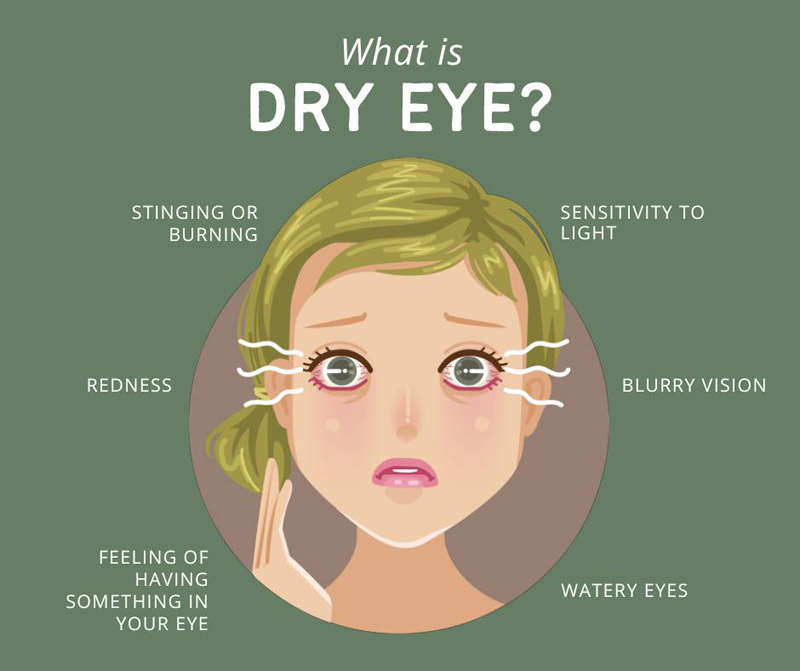Dry Eye
Diagnosis and Treatment

What is Dry Eye?
Dry eye is a condition where the person doesn’t produce enough quality tears to lubricate and nourish the eyes. Tears help maintain eye health and keep vision clear. They provide lubrication, reduce the risk of eye infection, wash away foreign matter in the eye, and keep the surface of the eyes smooth and clear. When tear production and drainage are out of balance, dry eyes can occur.
What Causes Dry Eye?
People can develop dry eye for many different reasons. Many people over 65 experience dry eye symptoms as part of the aging process. Women are more likely to develop dry eyes due to hormonal changes caused by pregnancy, the use of oral contraceptives, and menopause. Some common medicines, such as antihistamines, decongestants, blood pressure medications, and antidepressants, can reduce tear production. People with certain conditions, such as rheumatoid arthritis, diabetes, or thyroid problems, are more likely to experience dry eye symptoms. Other underlying causes of dry eyes include inflammation of the eyelids and the surface of the eyes. Exposure to cold, smoke, and dry climates can also lead to tear evaporation, which in turn leads to dry eye symptoms. Not blinking enough (during long periods of computer use for example) may also contribute to dry eyes.
Symptoms of Dry Eye
Signs and symptoms of dry eye, which usually affect both eyes, may include:
- A stinging, burning, or scratchy sensation in your eyes
- Stringy mucus in or around your eyes
- Sensitivity to light
- Eye redness
- A sensation of having something in your eyes
- Difficulty wearing contact lenses
- Difficulty with nighttime driving
- Watery eyes, which is the body’s response to the irritation of dry eyes
- Blurred vision or eye fatigue

Diagnosing Dry Eye Syndrome
At Greene & Greene Optometry, our optometrists can diagnose dry eye by evaluating the quantity and quality of tears produced by the eyes as well as considering the patient’s symptoms, health history, medications, and environmental factors. With the information obtained from the dry eye evaluation, our optometrists can determine if the patient has dry eyes and can advise on treatment options.
Treating Dry Eye
While dry eye can be a chronic condition, our doctors can prescribe treatment to help patients maintain healthy eyes, minimize dryness, and discomfort, and prevent vision from being affected. Primary treatments for the management and treatment of dry eye include using artificial tears, increasing tear production, and treating inflammation of the eyelids or the eye surface.
Symptoms of dry eye are uncomfortable, but we can help! Contact us today to schedule a dry eye evaluation in Watertown.
